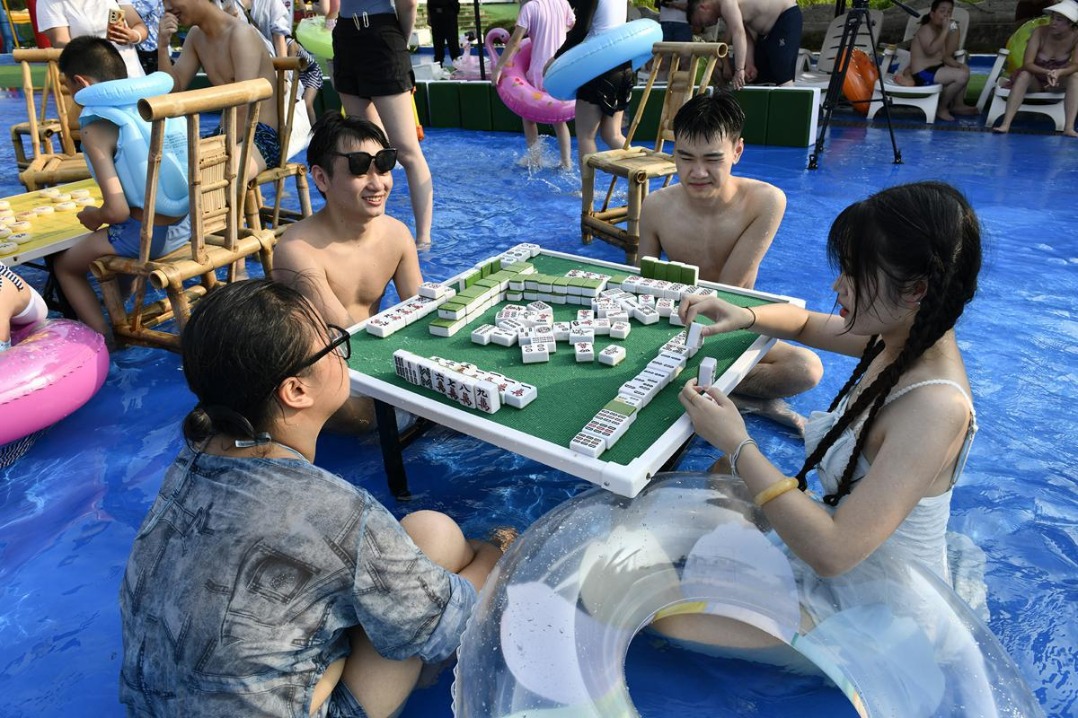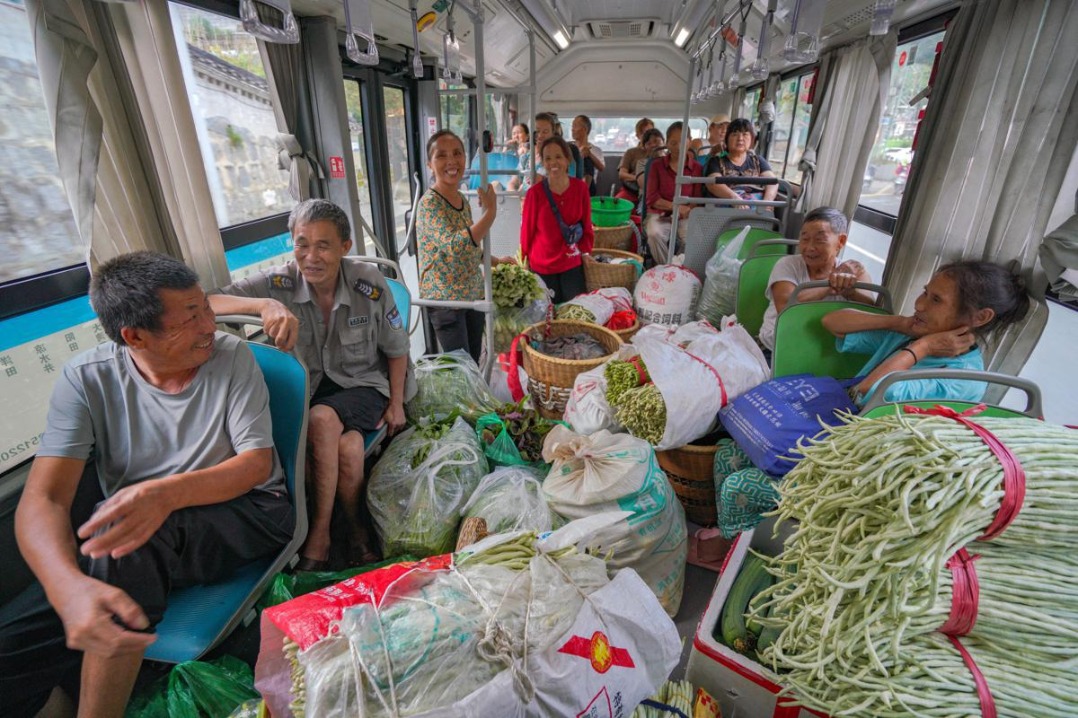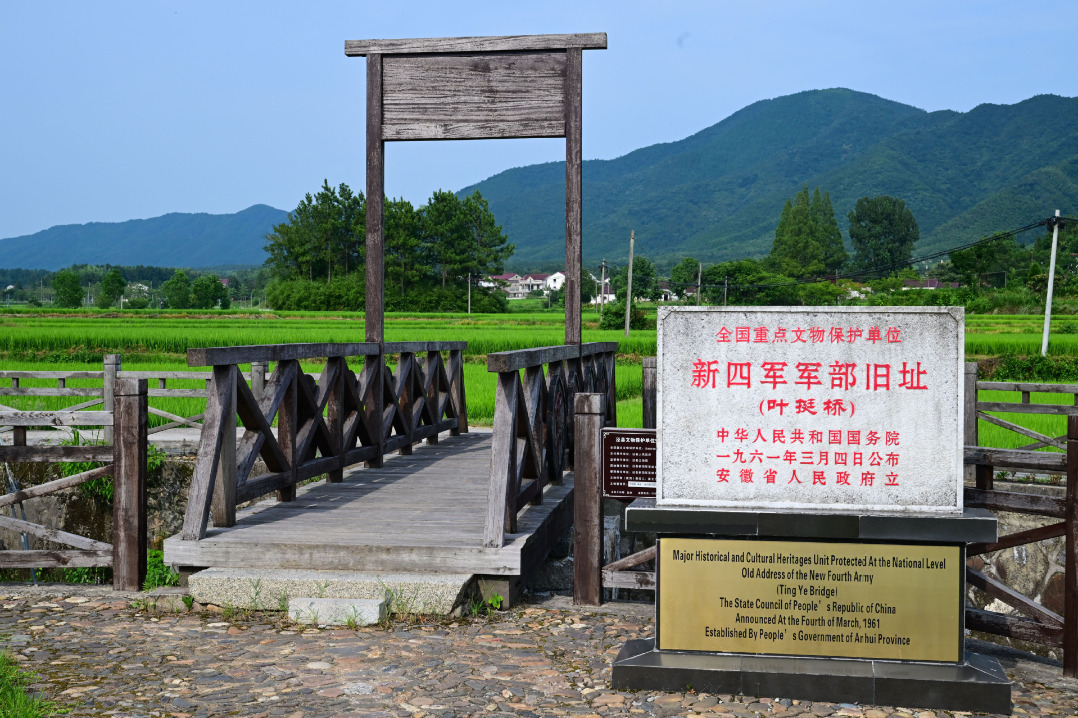Nation aims to hasten patent reviews
Revised rules expected to help boost innovation, high-quality growth


Chinese intellectual property authorities are working to further improve the efficiency of patent reviews as required by the central government to boost innovation-driven development and high-level opening-up.
The requirement has been included in the revised Rules for the Implementation of the Patent Law, which were recently approved by the State Council, China's Cabinet, and will take effect on Saturday.
"We'll optimize the review standards in new fields and emerging businesses, such as in big data, artificial intelligence and gene technology, in line with the revised rules, and greater efforts will be made to speed up patent examinations," said Wei Baozhi, an official from the National Intellectual Property Administration.
Data released by Wei in late December showed that the average time spent reviewing an invention patent was reduced to 16 months last year, shorter than in the United States, Europe, Japan and South Korea. The review time in 2022 was 16.5 months.
While requiring the acceleration of reviews, the revised rules clarify that IP regulators should also make it more convenient for innovators to apply for patents by streamlining procedures. They should also offer stronger patent protection and high-quality services.
Shen Changyu, head of the administration, stressed the importance of carrying out the directives in the rules.
"They will be conducive to improving the level of China's patent creativity, utilization, protection, management and service," Shen said.
He said that the revising of the rules is a significant move in the nation's efforts to build a rule-of-law environment for innovation, adding that the move will also play a big role in promoting high-level technological self-reliance, advancing high-level opening-up and facilitating high-quality development.
Assuring implementation
The move to revise the rules is aimed at helping IP regulators accurately implement the amendment to the Patent Law, which was passed by the Standing Committee of the National People's Congress, China's top legislature, in October 2020 and took effect in June 2021, according to Jin Wuwei, an official from the Ministry of Justice.
"Our country has attached great importance to IP protection. For example, strengthening IP protection and supporting innovators by rule of law was highlighted in the report to the 20th National Congress of the Communist Party of China in 2022," he said.
Emphasizing patent protection as a crucial part of IP protection, he added that amending the rules was also an indispensable step toward fulfilling China's global obligations and meeting international standards.
In February 2022, China applied to join The Hague Agreement Concerning the International Registration of Industrial Designs under the World Intellectual Property Organization.
Three months later, the application was approved and took effect.
"To ensure the implementation of the law as well as the adoption of the agreement, we worked with the administration to revise the rules," Jin said.
"During the revision, we not only refined provisions to keep them consistent with the law, but also linked them with the agreement," he said.
Zhang Peng, head of the IP administration's Treaty and Law Department, said that the government body added 30 provisions while revising the rules and removed four articles — more comprehensive changes than in any of the previous rule revisions.
To ensure the latest rules will be better carried out, the administration has also created four supplementary documents that will also come into effect on Saturday, she said.
Now that patent reviews must be accelerated, Shen said the administration will explore new paths to help entities engaged in emerging sectors — including the green and low-carbon, new energy, new materials, life sciences and quantum information sectors — apply for patents in line with the rules to provide them with stronger technological support.
"Our patent protection and capability of preventing IP-related risks in these sectors will also be strengthened," he said.
Shen said that in the first 11 months of last year, the value of China's exports of electric vehicles was 269.3 billion yuan ($37.6 billion); the value of its lithium battery exports was 419.4 billion yuan; and the value of the solar cell exports reached 289 billion yuan, showing a strong development momentum.
He said that the number of products in those three sectors in the global market has been increasing.
"Behind the rapid growth of the industries, there is strong support for numerous patent technologies," he added.
In the field of electric vehicles, for example, the number of globally valid patents of China's top 10 new energy vehicle automakers in terms of sales has exceeded 100,000, he said.
By May last year, global patent applications for key technologies in solid-state batteries had reached 20,798, with China accounting for 36.7 percent of the total, he said, adding that the global patents applied for by Chinese entities in this regard have grown at an average annual rate of 20.8 percent over the past five years, ranking first in the world.
In the field of solar cells, China leads the world with a global patent application volume of 126,400, demonstrating its strong innovative capabilities.
He said the administration focused more on these industries while revising the rules to help the country promote industrial innovation and increase productivity.
Early settlement system
The revised rules also call for the establishment of an early settlement system for drug-related patent disputes through administrative methods to protect the legitimate rights of patent owners and advance the high-quality development of the pharmaceutical industry.
Zhang Zhicheng, an administration official, said that before the rules were issued, his department had jointly issued a few guidelines with the National Medical Products Administration to make preparations for the establishment of the system.
Under the guidelines, the administrations set up an adjudication board to resolve patent disputes involving drugs in their early stages of development, he said.
By the end of November, the board had handled 167 cases, 134 of which had been resolved.
Ninety-eight enterprises were involved in these cases, and more than 95 percent of them focused on chemicals, he said, adding that the average time needed to resolve a case was 168 days — much shorter than the nine months required by the revised rules.
Zhang pledged to improve the early settlement system by encouraging the board to play a bigger role in its development.
"It will help reduce the risk of patent infringement in the pharmaceutical field and further safeguard public health," he said.
While strengthening patent protection, Shen said that the marketing of patent achievements should also be intensified in accordance with the rules.
The administration will go through the patent storage facilities of universities and scientific research institutions as quickly as it can, with optimization of IP platforms to provide more efficient services for applicants who want to register or transfer their patents, he said.
He added that Sichuan, Guangdong, Jiangsu and Hubei provinces have taken the lead in reviewing patents stored at local colleges and academies.
caoyin@chinadaily.com.cn
- Global campers promote cultural exchange at mini world expo
- National health body expands pediatric services to nearly all hospitals
- Premier announces construction of Yarlung Zangbo hydropower project
- A perfect summer retreat in Hainan's tropical rainforest
- International beer festival kicks off in Qingdao
- Naadam festival gets underway in Inner Mongolia






































